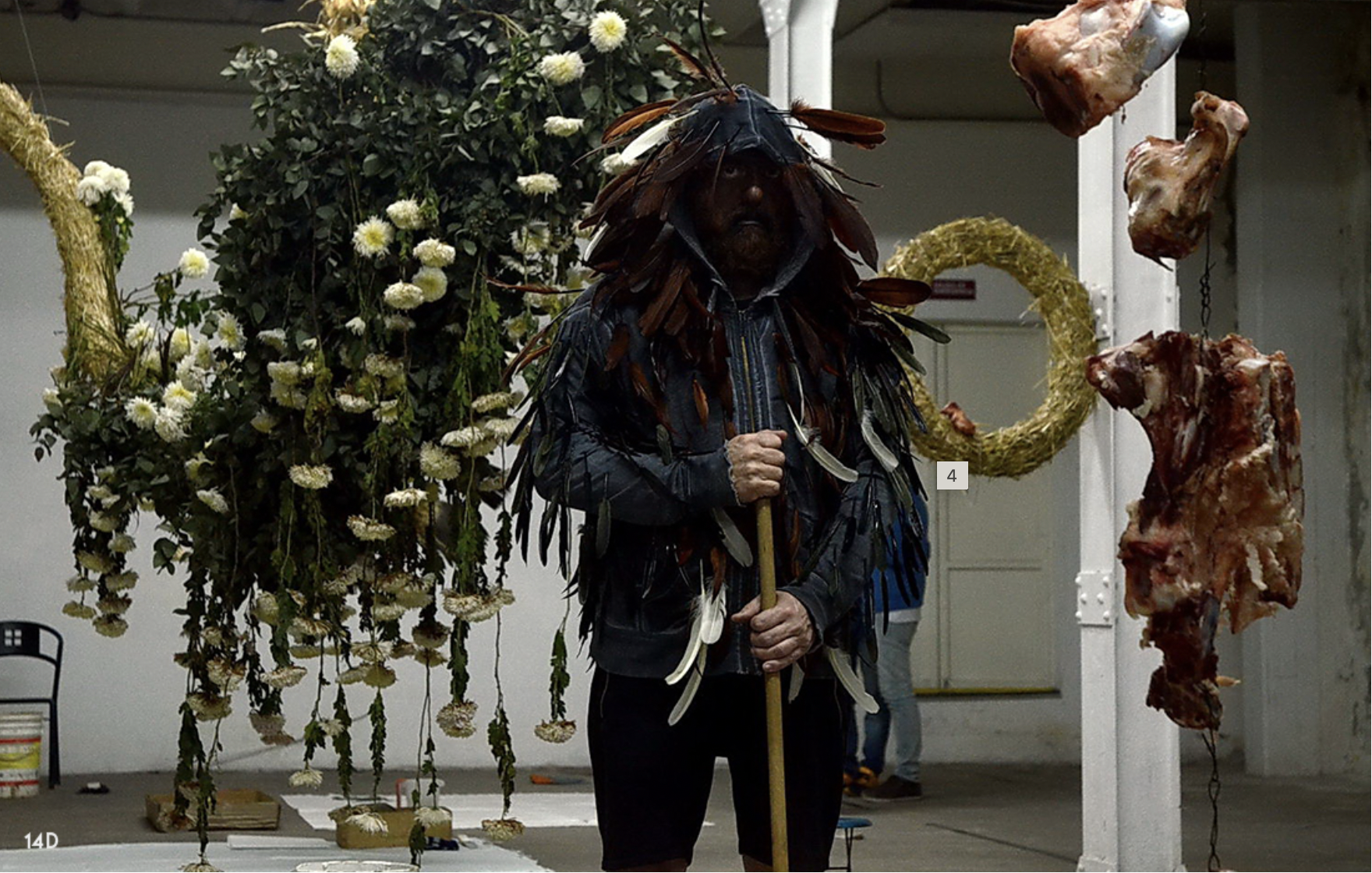Herrera’s art dialogues with the history of the ornament and the pictorial genre of the still life; his titles often reference the (self)portrait tradition. The artist presents successive versions of himself, registering the change in his face as well as his character over the course of his life. Arrangement is a metaphor for the work of recomposing one’s self, but also a memento mori that invites raw, baroque, and vital homosexual hedonism. Herrera meticulously arranges objects and organic materials. He establishes a degree of familiarity between the wide range of materials with which he works (anchor chains, sheets, blankets, wood, flowers, feathers, bread, meat, bones, tableware, water, and soap), materials that take their dying breath in assembled compositions inside boxes or bags. On occasion, those composites form part of installations that include other elements as well; they organize viewers’ passage through the work. The structure of Herrera’s work engages thinking about death and madness, the passage of time, the sexual, rites of passage, and the present. Organic and inorganic elements come together in a question that runs through all his art: Is it possible to disappear?
The body is brought to bear as remain: substances, emissions, and memories become material to return to the scene(s) time and again.


 Herrera Carlos
Herrera Carlos